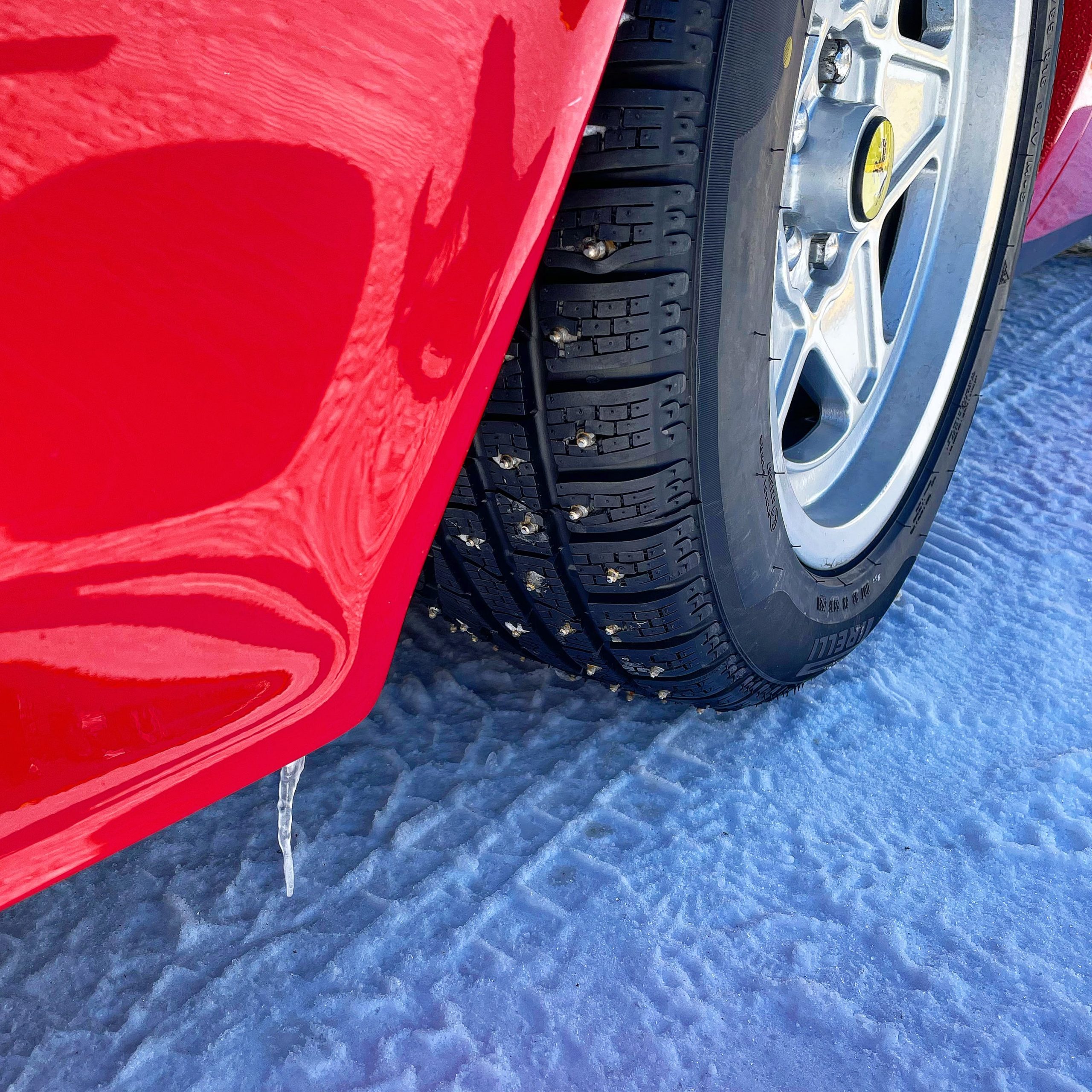
*Disclaimer: not associated with the Dummies brand
Here are SnowBrains’ top tips for driving on the snow:
Clean off snow:
Clean the ice and snow off your car. Make sure you clean the entire windshield—a tiny peephole to look through is not sufficient. Depending on where you live, you can get a fine for not clearing the windshield properly. If there is a big build-up of snow, you should brush it off the car. Snow on the hood of your car will smack into your windscreen once you hit the higher speeds and give you a massive fright. Likewise, snow on your roof will slide onto your windscreen when you brake, blocking your view.
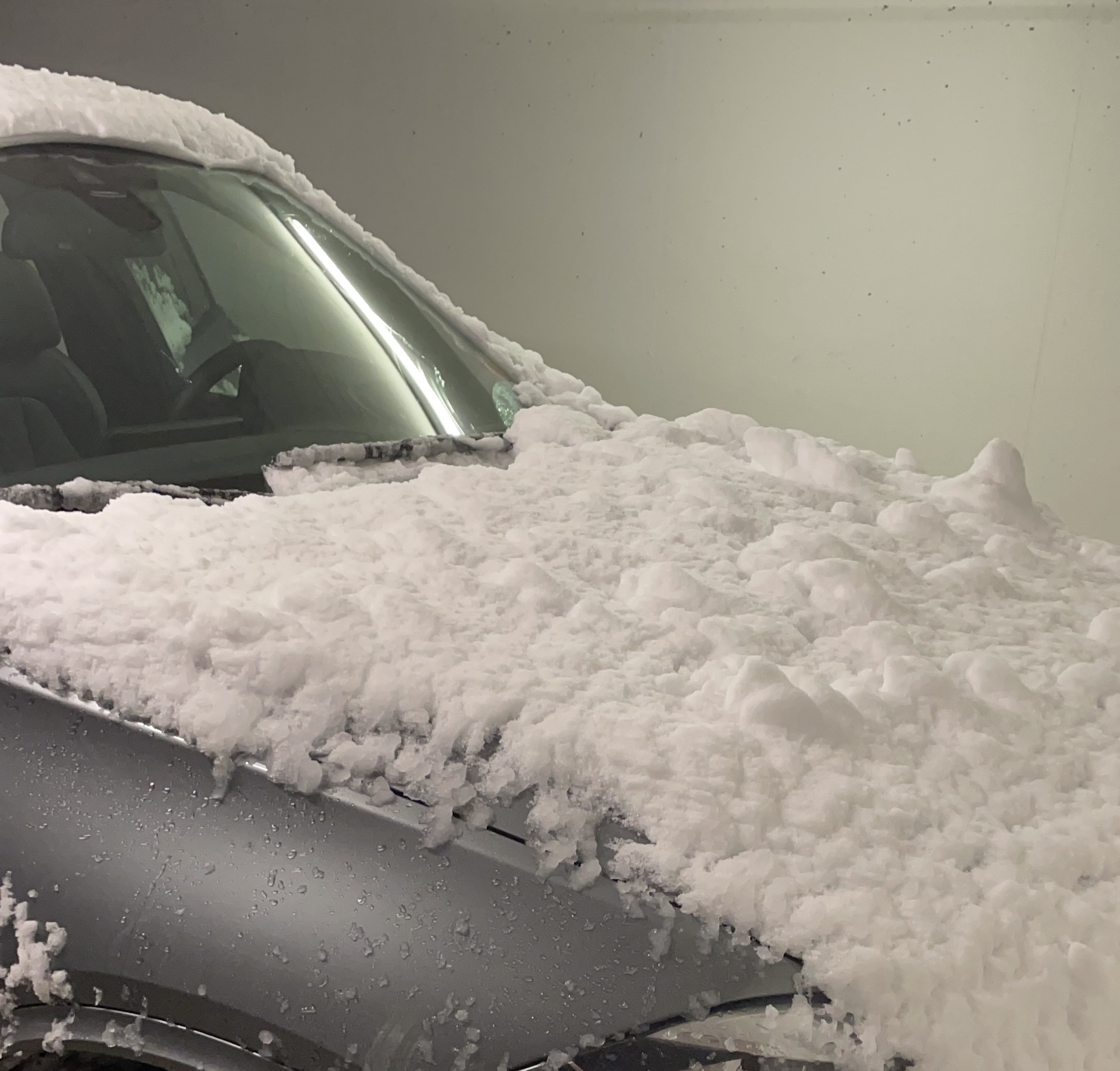
Bigger is not better:
You might think a big car is the way to go, but unfortunately, weight is not your friend on snow as it increases your braking distance. Raised, heavy cars are more unstable on snow due to their higher center of gravity.
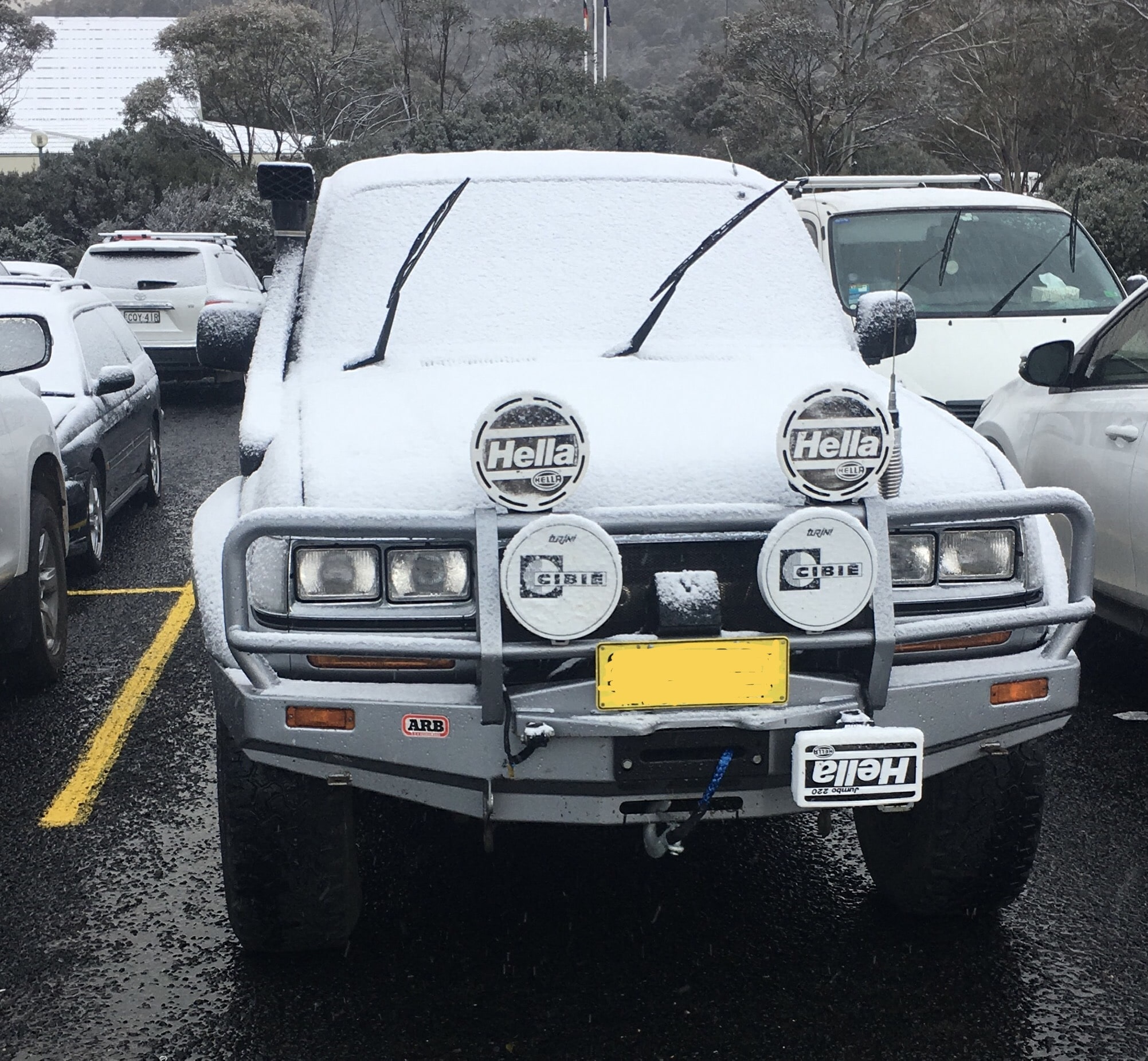
Keep a safe distance:
Yes, I am sure you have heard this one ad infinitum, but keep a safe distance from the traffic in front of you. This is the easiest way to stay safe on snow. It is important to remember that braking distances on snow and ice can be 4 to 10 times longer than on dry roads, depending on the weight of your car, the snow, and the speed you are traveling at.
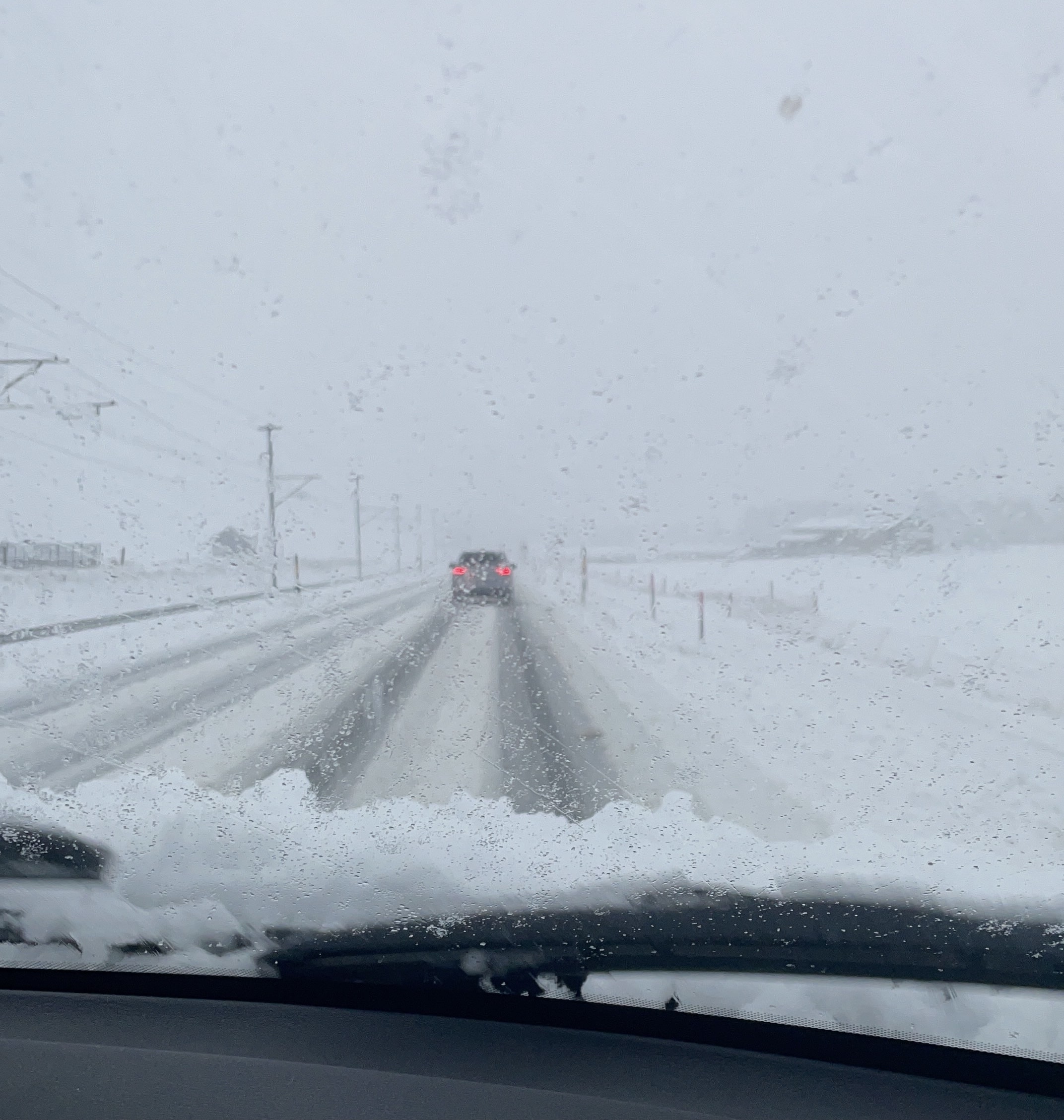
2WD vs 4WD:
A 4WD will beat a 2WD hands down in the snow but if you own or prefer a 2WD and you’re snowbound, then make sure it is front-wheel drive. A rear-wheel drive vehicle essentially pushes the car through the snow like a sled, making it more prone to skidding.
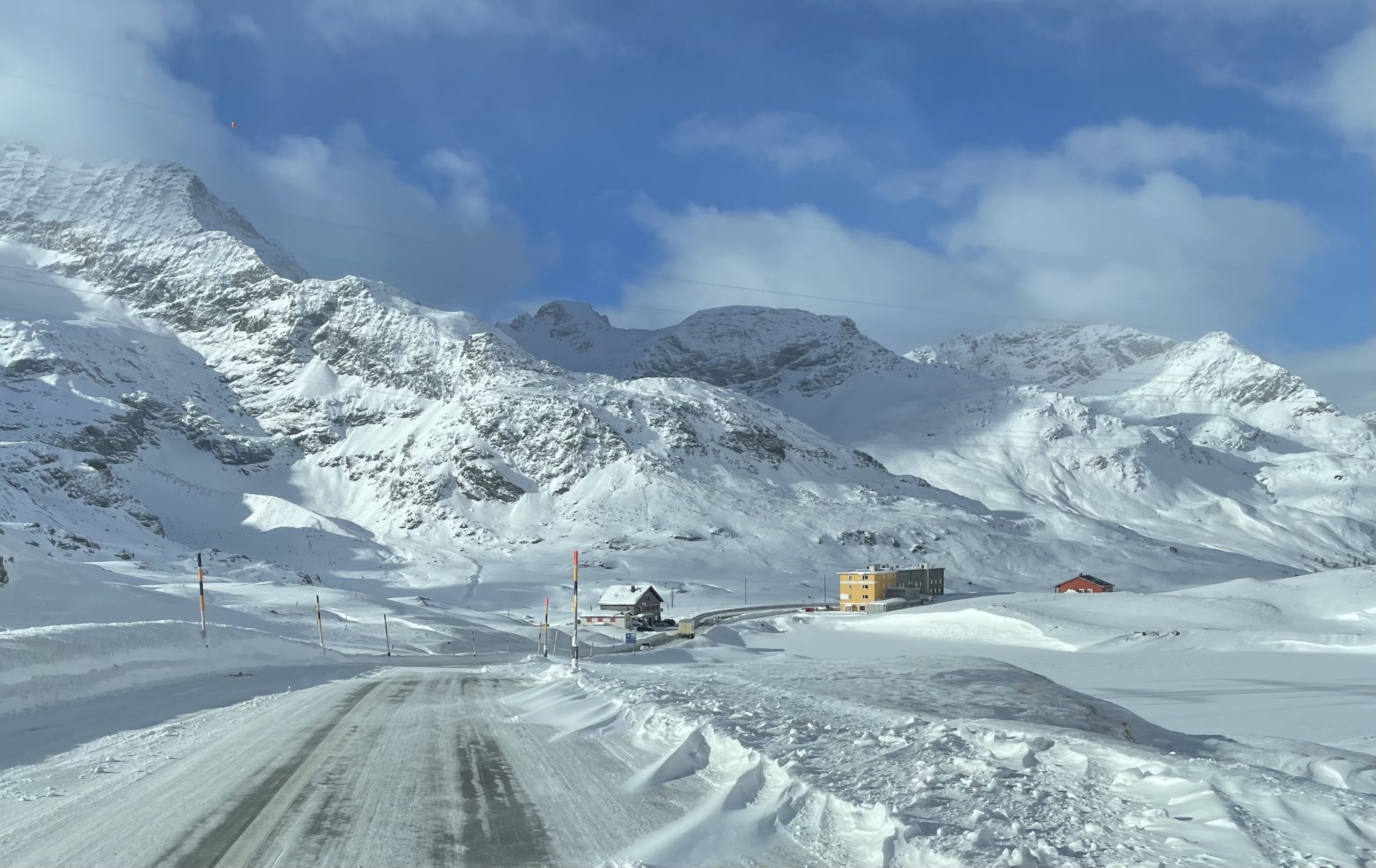
Braking:
Do not slam your brakes on snow. If your car is fitted with an ABS system, your car will stutter brake to stop the wheels from locking. If your car happens to be so old to not be fitted with ABS, you have to stutter brake yourself to prevent them from locking. A locked wheel on snow will slide. If the situation allows a slow deceleration, use engine braking.
Don’t know what engine braking is? Engine braking means that you take your foot off the accelerator and use the gears to slow down your car by slowly shifting down. Don’t think you cannot do this in an automatic. All cars have the facility to shift down in gears. Some do that with the means of paddles at the steering wheel, others use the center gear stick, please refer to your car manual for this and do so slowly at appropriate RPMs. Practice it on dry land before attempting this on snow. Downshifting will not ruin your transmission block if done correctly.
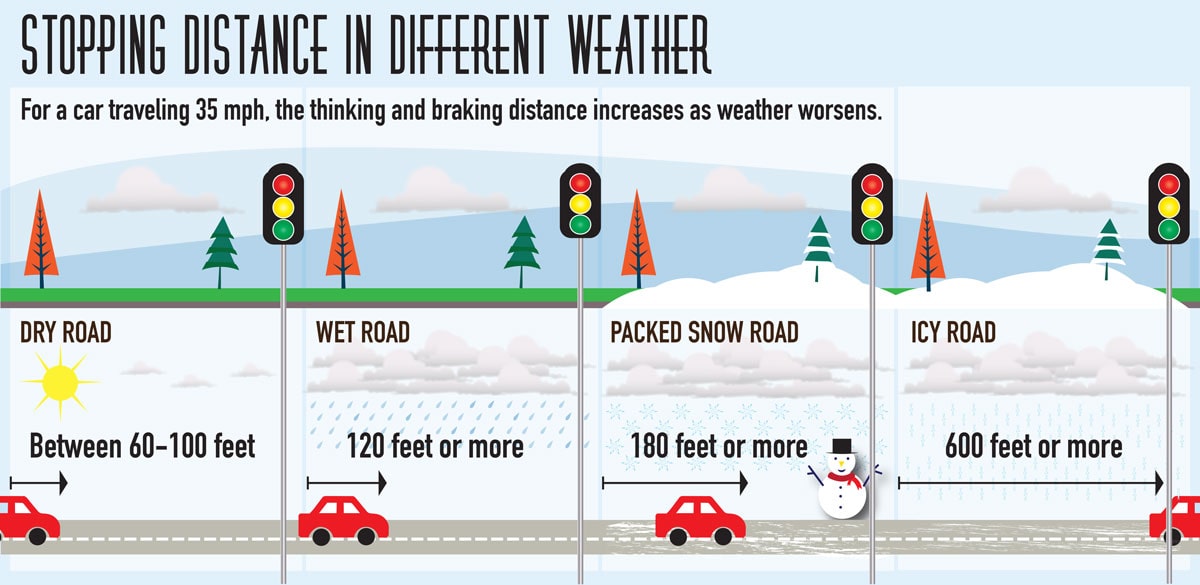
Tires:
Good tires are the key part of your snow-driving experience. Whatever tires you have, make sure they have a deep profile left. If you are going to spend a significant amount of time on roads that are prone to snow, invest in a pair of winter tires. In some European countries, this is even compulsory.
My British friend had a chuckle when I suggested winter tires for his trip to Switzerland. After sliding down a road he invested in a set and has not looked back. Many people mistake winter tires to mean tires with studs on them. Those are not winter tires, those are studded tires.
Winter tires have a higher natural rubber content, making them softer and more supple in cold temperatures. They also have more small grooves in their tread to disperse water improving traction. The deep treads allow snow to get stuck to the tires which might sound counterintuitive but actually allows for more grip. Nothing grips snow better than snow. Treads on winter tires are between 0.3in (7mm) and 0.4in (9.5mm).
Tire manufacturer Continental says that a vehicle fitted with winter tires will come to a standstill on a snow-covered road (from a speed of just 30mph) after 115ft (35 meters). With normal tires, the braking distance required is a further 26 ft (8m). That’s 141 ft (43m) in total or another two car lengths.
Also, fatter is not better on snow. Fat tires only provide more grip on dry surfaces. On wet and icy roads fat tires are more prone to hydroplaning. Narrow tires provide better grip.
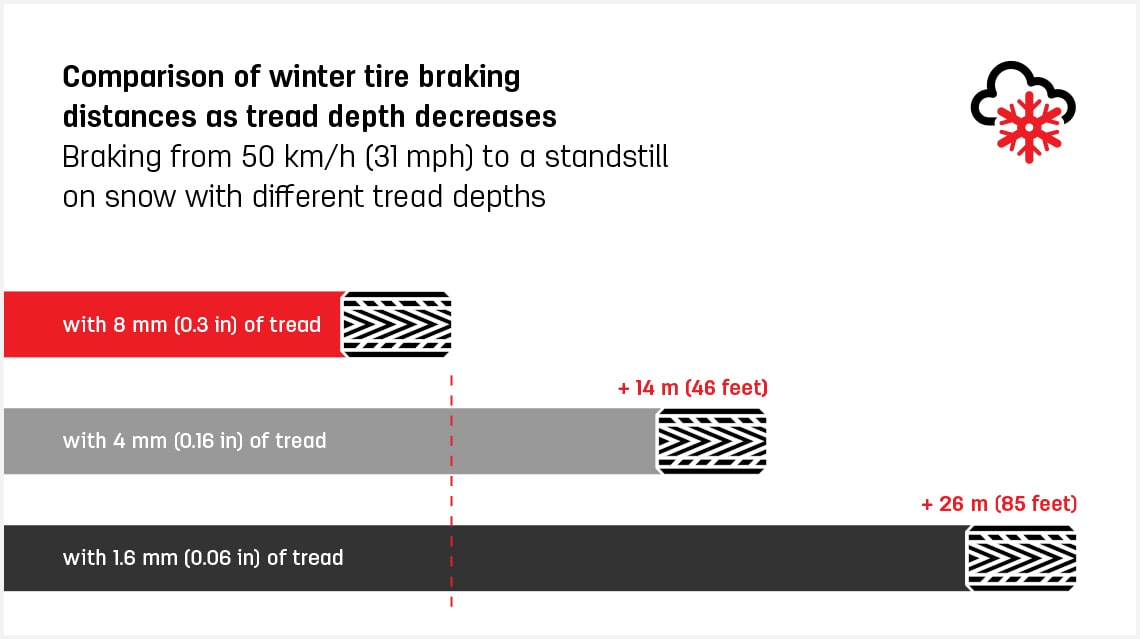
Adjust your speed ahead of danger:
Anticipate areas of increased risk and slow down in time. Be mindful that certain areas will be more prone to being icy and thus slippery: bridges, traffic lights, and other high traffic spots like crossings, forest-shaded areas, and stretches alongside rivers and creeks.
When approaching a corner, brake before the corner and slow down to a speed you can comfortably and safely make the turn. Always brake on the straight part of the road; never brake in the corner as this is how skidding in corners occurs.
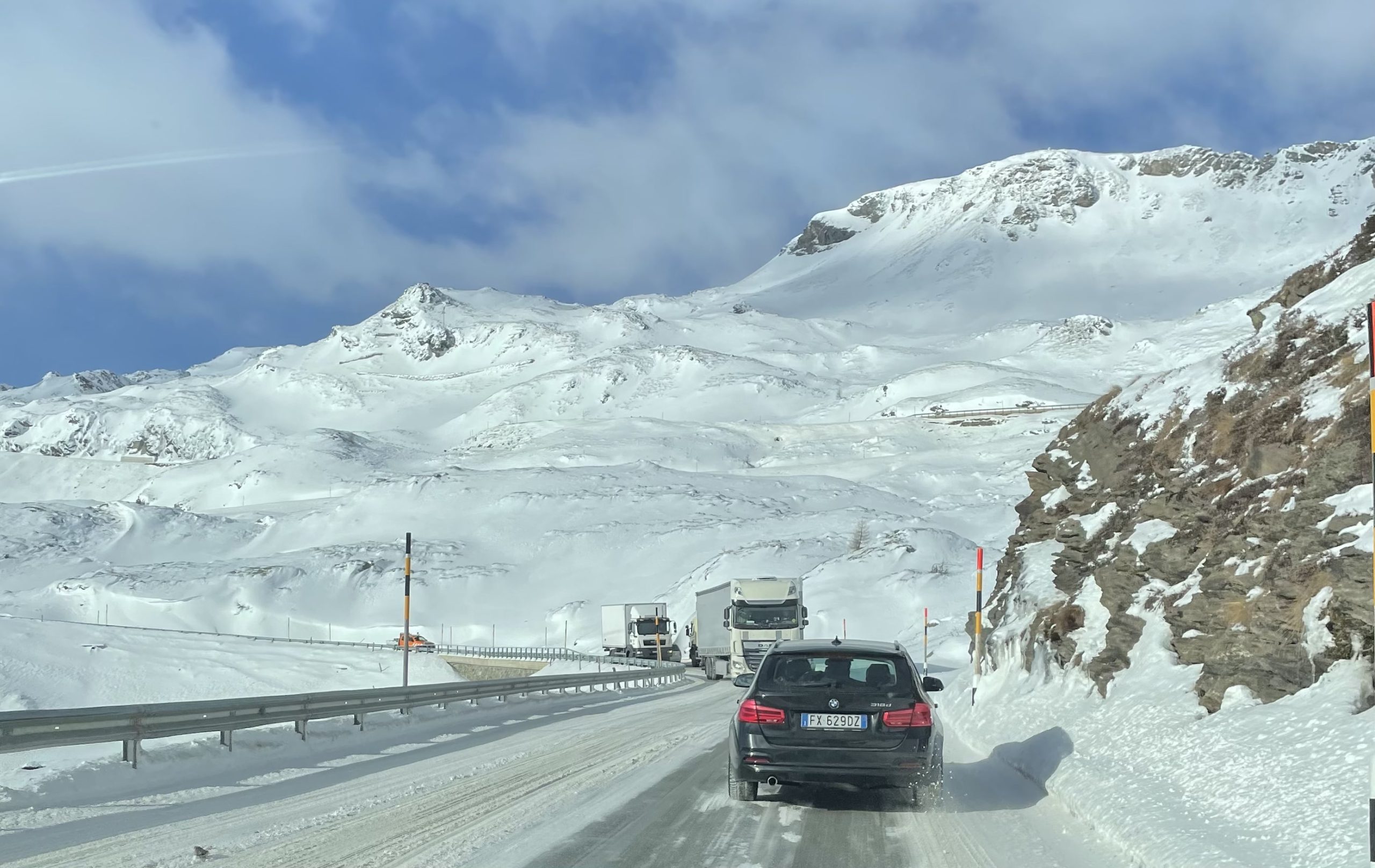
Carry Chains:
Carry chains with you if you are heading into the snow and you know that the roads you travel on can be covered. Also, please do not put on chains if there is no snow cover on the road. And most importantly: please familiarise yourself with how to put on chains. My suggestion would be to practice it once at the start of the season, because you do not want to stand in the cold with a car in the ditch and other cars going past you at 50mph, trying to figure out how to put them on for the first time.
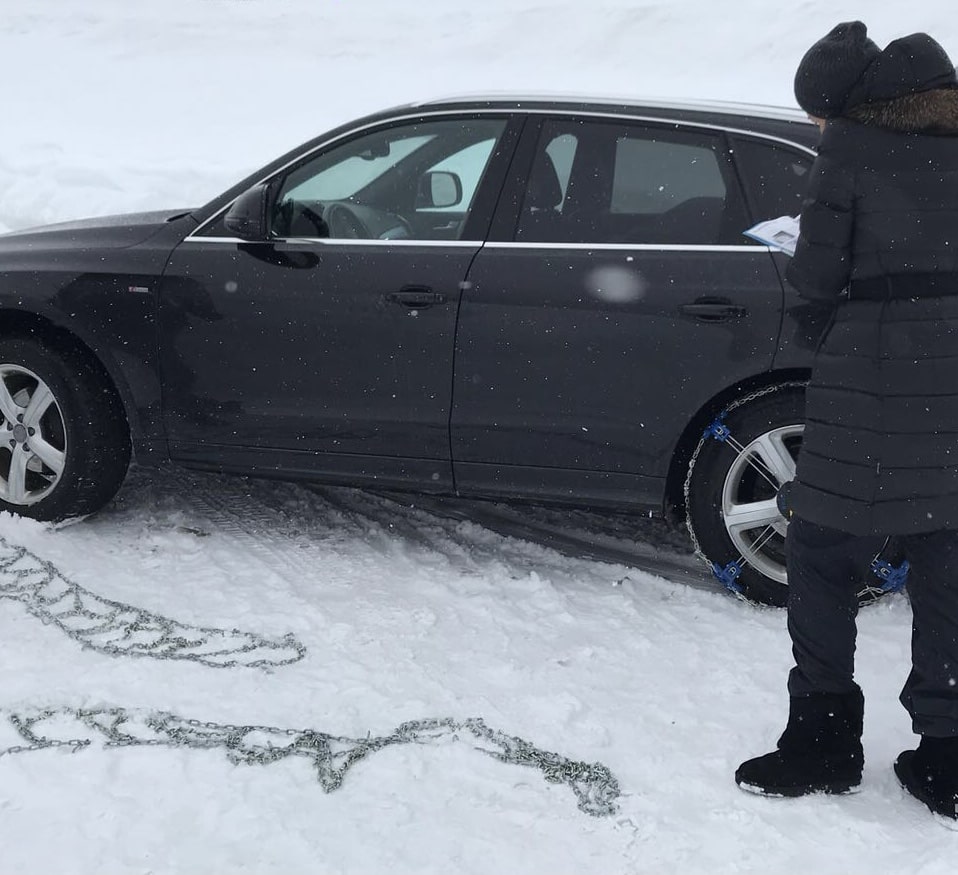
What to do when it is too late and your car is skidding:
- DO turn your car in the general direction of the slide. The front wheels should face the direction the rear of the car is moving, and try to slowly accelerate out off the slide. Locking the wheels in the opposite direction of the slide will exacerbate things.
- DO counter steer at 3-5 degrees into the direction you want to go but not more. People tend to oversteer, causing the tires to go sideways, exasperating the slide.
- DON’T jerk your steering wheel and oversteer, this will send you into a spin.
- DON’T slam your brakes as this will lock the tires and worsen the slide. You can tap the brake to try to slow down but you cannot fight the car’s inertia at this stage your car. The best way to regain control is to regain grip and actually accelerate out of the slide.
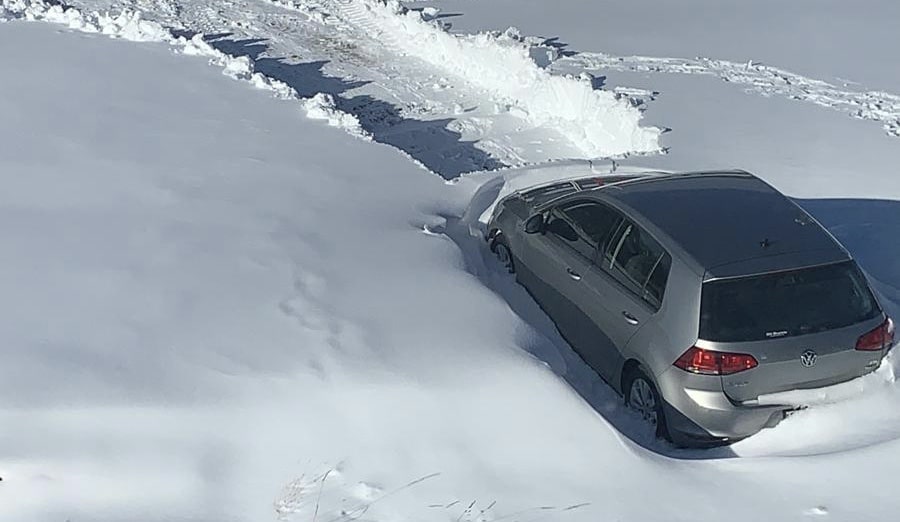
Stuck in the snow:
Stuck in a snow drift and your wheels are spinning? Slid down a steep road and cannot regain traction? First, clean out loose snow from the ground as it will not provide grip. Here are some ways to get out:
- Chains: if you have chains, this is the moment to get the chains on if there is room and slippery ground is your problem. If you are bogged in powder, you will most likely not get chains onto the tire in this situation.
- Recovery tracks/skid boards: if you happen to carry skid boards, use these now under the tires the power is coming from, depending on whether you have a rear-wheel or front-wheel powered car.
- Sand or gravel: these provide more traction than snow, many ski resorts will provide these along the road for safety reasons. Add a few shovels as close to the bottom of the tire as possible.
- Foot mat: if nothing else is in sight, you can use your foot mats from inside the car to gain traction. Place them in front of the tire that is powered.
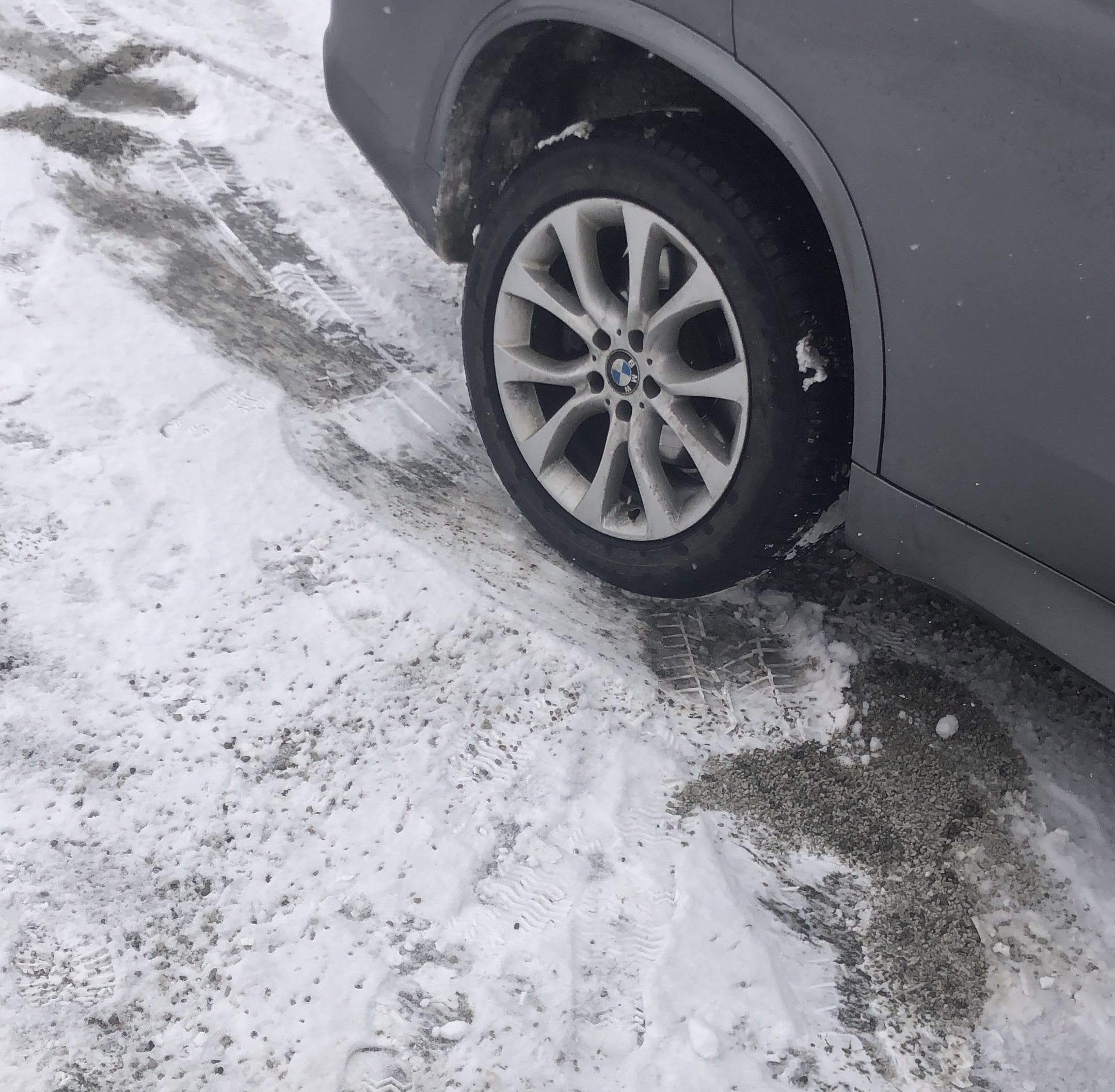
Thanks Michael – I corrected that, English is my second language.
Regarding weight, as you say, it depends on the velocity and situation. When breaking on snow, it can become a danger.
Regarding center of gravity, that becomes relevant in corners and in evasive manoeuvres (for entertainment, I suggest watching some “elk test” videos on youtube).
exacerbate=make a situation worse
exasperate=frustrate to point of annoyance
and heavy does = greater momentum at a given velocity, but weight also = greater traction. momentum and friction (traction) both are directly proportional to mass.
the higher center of gravity of larger
vehicles is pretty much irrelevant on snow and ice, as there is insufficient traction to cause any tipping or tilting of any roadworthy vehicle.
Just to add on engine braking, do not shift to far down at once. You may cause tires to spin and lose traction if RPM’s are to high.